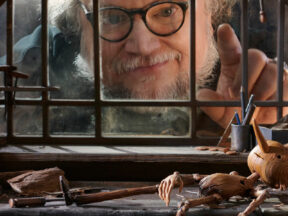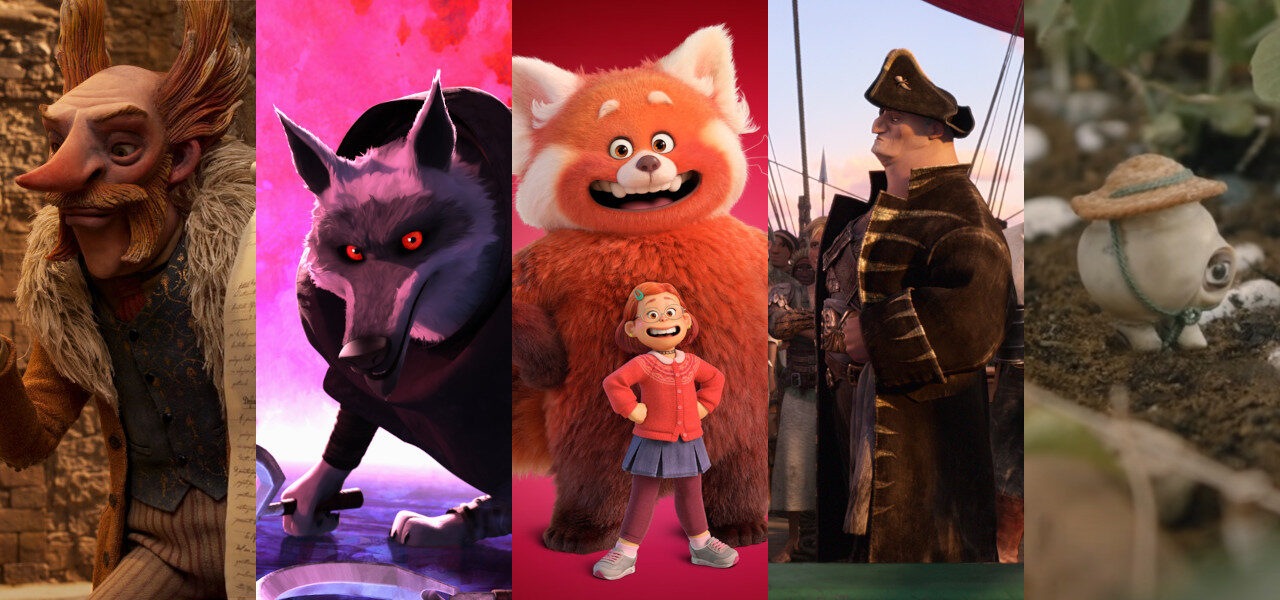
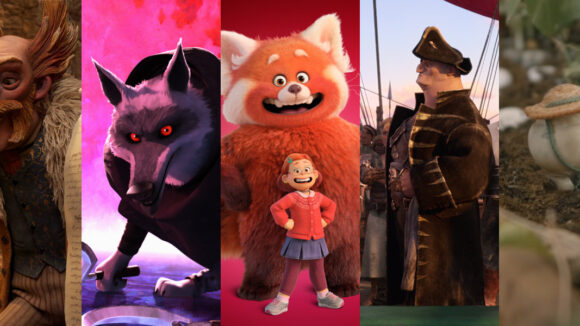
Creating The Year’s Most Memorable Oscar-Nominated Characters: Count Volpe, Wolf, Mei, Captain Crow, And Connie
The 95th Academy Awards are just around the corner, and voting for this year’s Oscars kicks off today.
To really put ourselves in the mood for the animated feature race, we spoke with several of the individuals responsible from each of the nominated films: Guillermo del Toro’s Pinocchio, Marcel the Shell with Shoes On, Puss in Boots: The Last Wish, The Sea Beast, and Turning Red.
The topic of our discussion: character performance. We selected one of the memorable characters from each film and discussed how they brought the character to life. We discussed their inspirations, the difficulties they faced in getting their ideas on the screen, and the impact that voice actors had on the finished characters. They also shared concept and development art to give a better idea of each character’s origins.
Guillermo del Toro’s Pinocchio
Brian Leif Hansen, animation supervisor
Character: Count Volpe
What were the visual references you had in mind when planning out Volpe’s physical appearance and movement?
Leif Hansen: Volpe has a certain Dr. Jekyll and Mr. Hyde quality to him. [Directors] Guillermo del Toro and Mark Gustafson wanted him to be able to switch from showman to supervillain in a matter of seconds/frames. When he’s the showman, he is broad/wide slightly bent backward with his chest out and open arms, and then he can instantly go into evil slightly hunched over, shoulders up, and takes a looming posture over his victim.

For the singing and dancing numbers we mainly used Bob Fosse in his portrayal of the snake in The Little Prince (1974). He has this very elaborate toe and leg work, it’s a kind of Michael Jackson before Michael Jackson. We also looked at the Nicholas Brothers as a reference for the dancing.
What difficulties did you encounter in realizing your goals for the character?
Leif Hansen: Volpe is one of the larger characters in the film and therefore quite heavy, so when manipulating him around on stage he needed a lot of support for him to not fall over – so having him jumping and dancing around was a big challenge, but I think we succeeded in making him look like the showman who is trained in his arts in a much fancier place then he now finds himself.
What impact did Christoph Waltz’s performance have on the Volpe character?
Leif Hansen: When you’re working in Animation, the voice talent is extremely important to you. You sort of feed off the energy that the actor put down on the track, and you listen to the voice over and over again to decode every single bit of the dialogue – so it’s a blessing to work with an actor like Christoph Waltz. He was also kind of typecast for this role, meaning that we had lots of live-action references to his performances in similar characters and situations. We also typecast our animators. We use artists that had a flair for grand gestures and snappy movements for the animation work on Volpe.
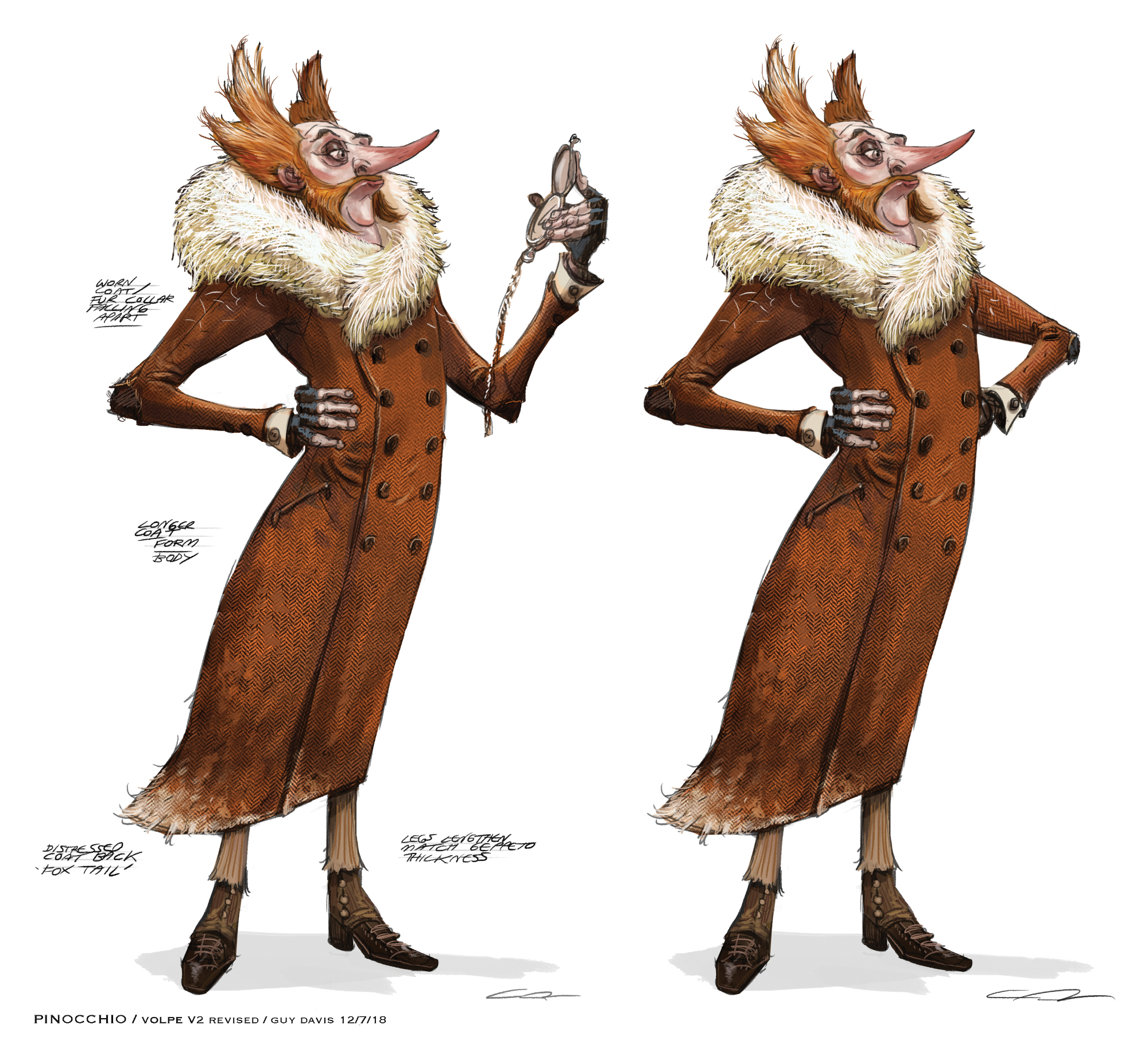
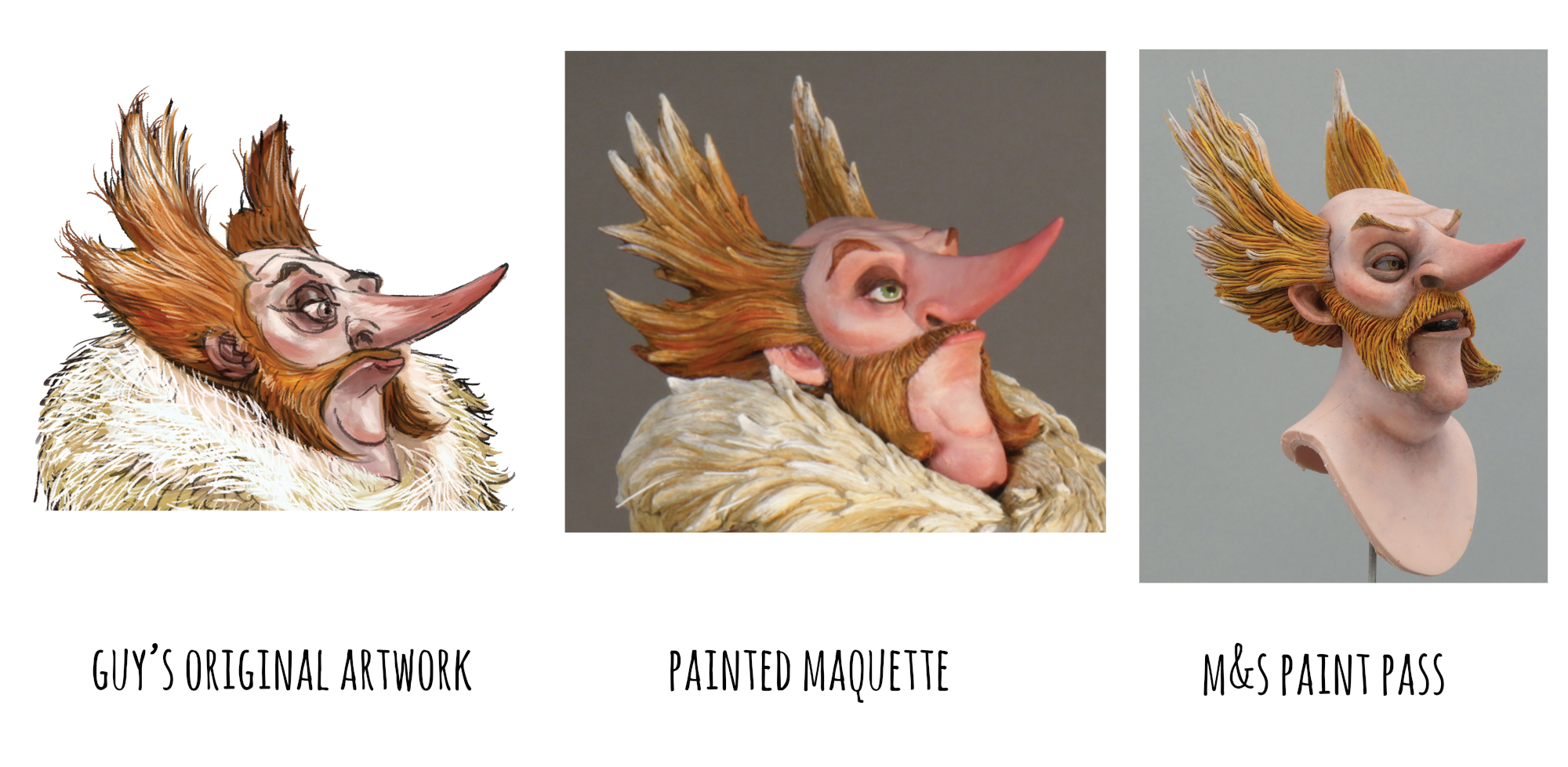
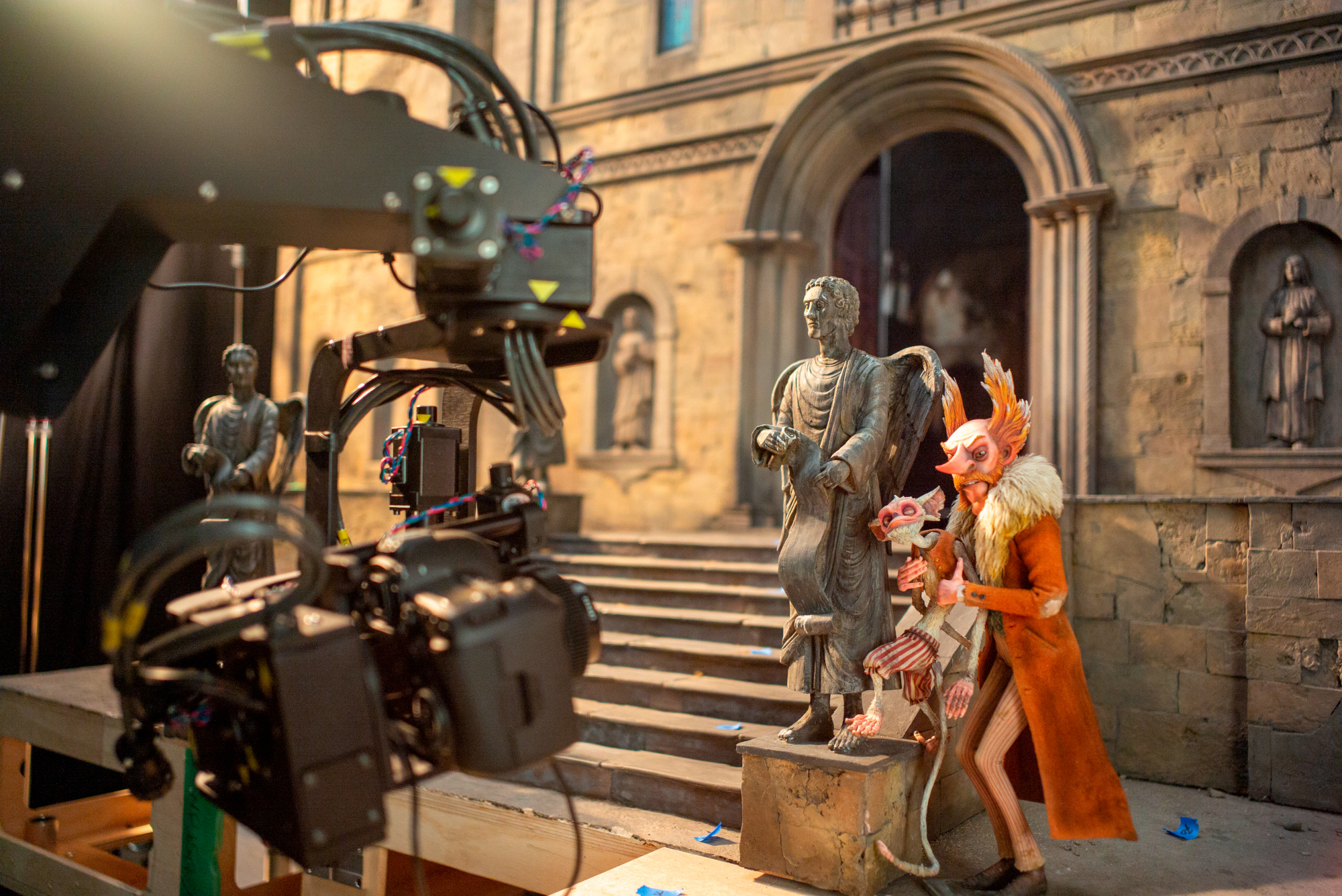
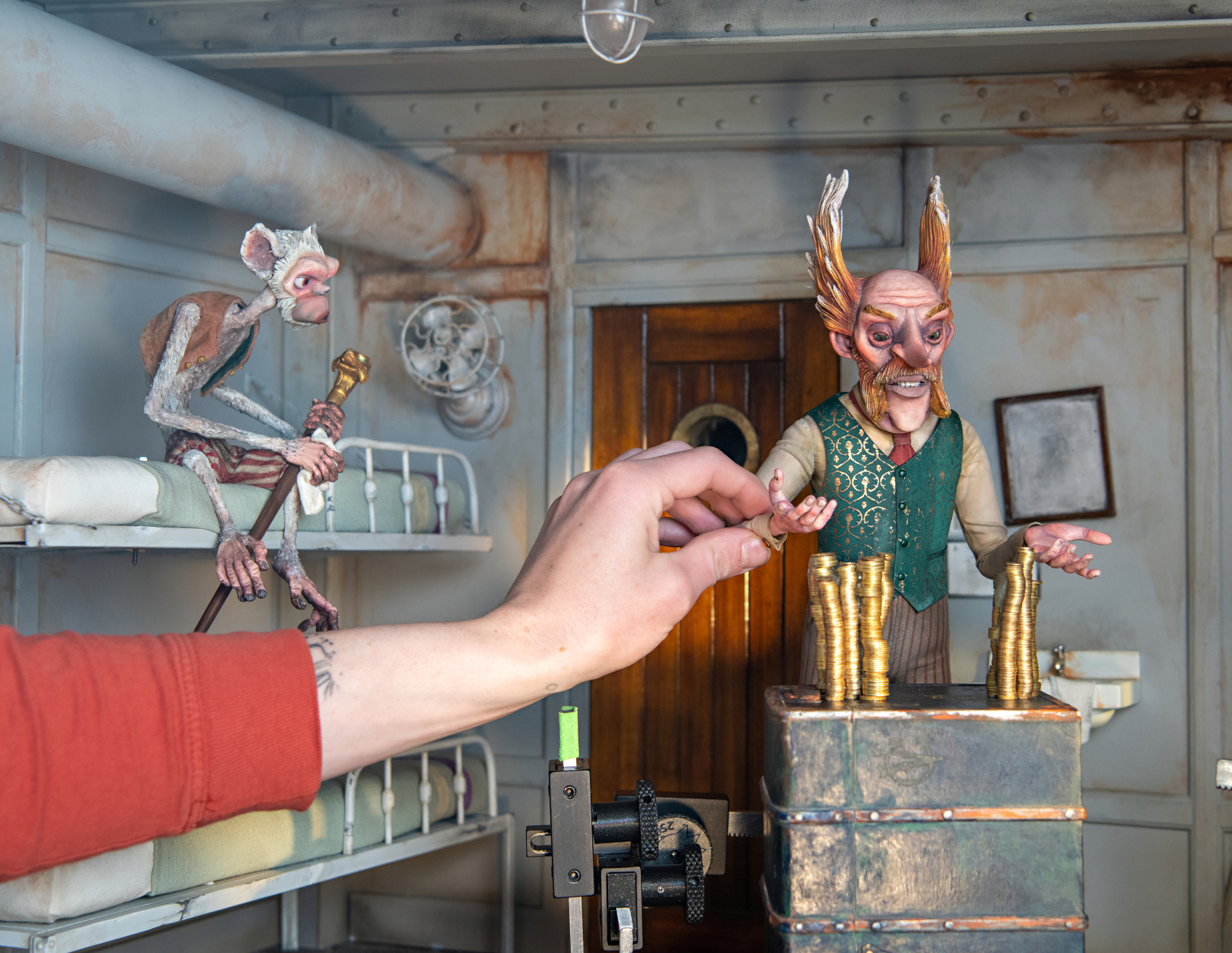
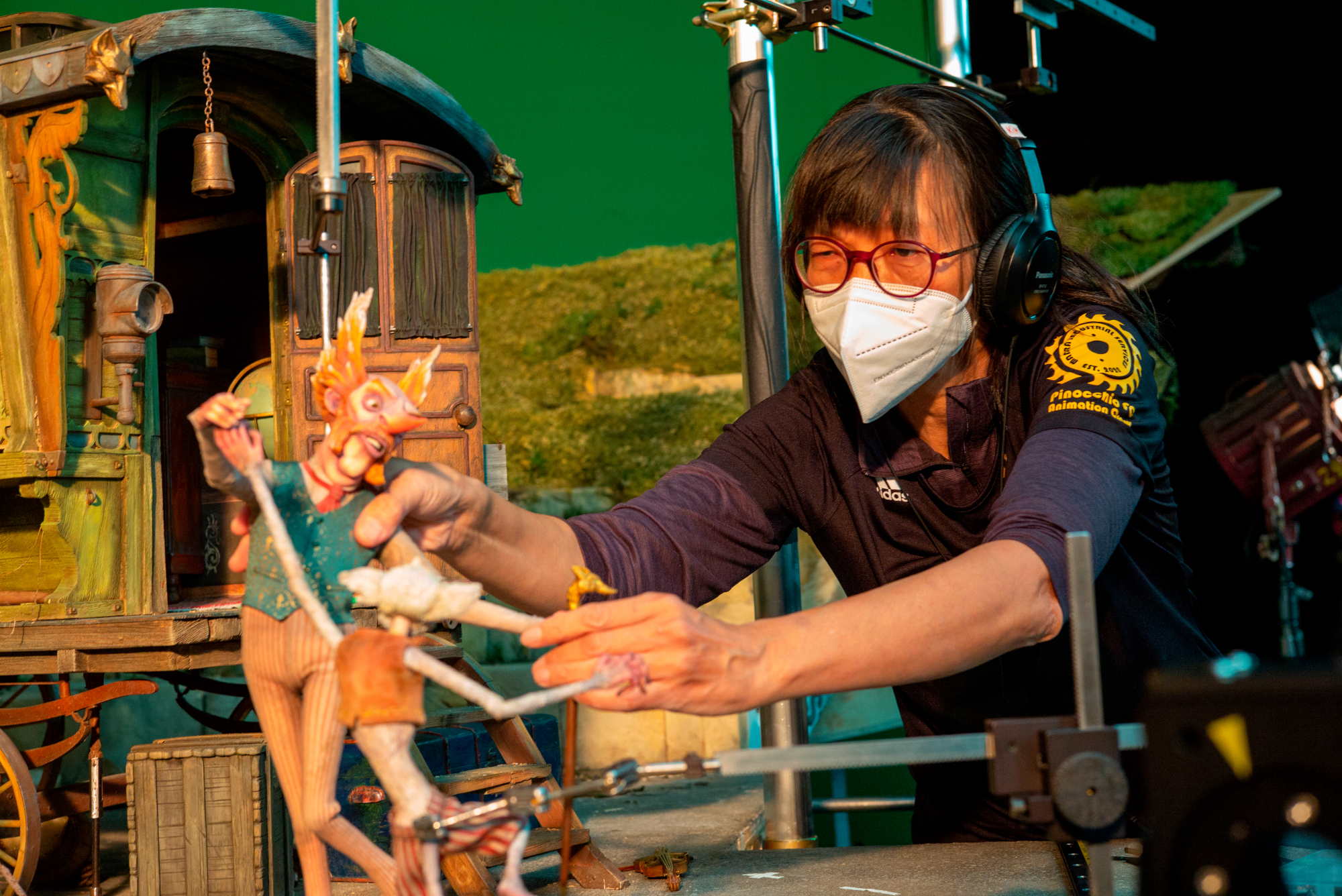
Puss in Boots: The Last Wish
Ludovic “Ludo” Bouancheau, head of character animation; Joel Crawford, director
Character: Wolf
What were the visual references you had in mind when planning out the wolf’s physical appearance and movement?
Bouancheau: The wolf was created with the idea of a samurai/gunslinger/bounty hunter. The poncho in his design represents that blend between western inspiration, the Japanese samurai, and the grim reaper. Nate Wragg was nice enough to include us in the design of the character’s face. In the early artwork, his face was alligator-like with a thin and long muzzle. The wolf in Princess Mononoke was a visual inspiration. I also liked the idea of the red eyes, as it would be an obvious indication that he was bad, but Puss wouldn’t necessarily see it that way the first time he meets him. The audience would have no doubt he was dangerous, but Puss would just see him as the awkward stalker guy in the bar.
Regarding his overall silhouette, the goal was to have him more human-like at first when he meets puss and get more animalistic when he smells fear from Puss and loses a bit of control. When that happens, he gets less upright and more hunched over like a werewolf, closer to a character like Jon Talbain in the Darkstalkers video games.

For his acting, we drew from multiple references. For example, in the opening scene, we wanted to wolf to be still and untouchable while being threatening, but we didn’t want him to be a maniacal villain. He’s introduced to Puss as an awkward fan, reacting in ways we wouldn’t expect from a villain. The main three references for his performance were Javier Bardem’s character in No Country for Old Men for the stillness and threat, Jodie Colmer’s character in Killing Eve for the volatile reactions and the enjoyment she gets from unexpected situations, and Lucifer from Constantine for the thrill of hunting Puss’ last life.
The action scenes drew a lot from anime, and those references made their way into the design and movement of the character. In the bar fight, for example, the way he dodges the first sword hits from Puss and knocks his sword into the barrel is very ‘anime-like’ with a strong unapologetic contrast between fast motion and still frames. Samurai Champloo, Dragon Ball, Naruto, Bleach, One Punch Man, and many others were strong references when trying to figure out the way the wolf moves; lots of strong and cool poses.
What difficulties did you encounter in realizing your goals for the character?
Bouancheau: Finding the right balance of restraint in the acting was tricky at first, but the directions and intentions for Wolf’s moment in the movie were very clear so we could build on them easily in animation. We had to keep in mind that less is more for most of his acting moments and finding the perfect body pose, silhouette, or expression wasn’t always easy.
The other difficulty was tracking how he would evolve physically through the movie. We wanted him to become more bestial/animalistic by the end of the movie, and Antony Holden’s storyboards were a real inspiration on how to tweak his appearance for that specific moment at the end of the movie; his legs and feet got bigger, he was more hunched over, and he had wider shoulders compared to the bar fight.
What impact did Wagner Moura’s performance have on the character?
Joel Crawford: A great villain is the embodiment of a hero’s worst fears. In our story about Puss in Boots coming to terms with his mortality, Death incarnate appears to be the ultimate antagonist.

When Wagner Moura first came into the recording studio, he told me his goal was to create a character that wasn’t just your typical arch-villain. From that moment on, we knew we were on the same page. Together, we explored and ultimately crafted a complex, and nuanced character who could go toe to toe with our fearless hero. During all his recording sessions, Wagner imbued every word with so much range and subtext. For example, at the bar when Puss says, “I laugh in the face of death,” Wolf replies, “So I’ve heard.” The line may be simple, but the performance is loaded with the subtext of Wolf’s personal vendetta against Puss.
Ultimately, the character Wagner found brought a unique balance of terrifying ferocity and social awkwardness that resulted in a pitch-perfect performance. I cannot imagine the character of Wolf with any other voice than that of the talented actor, Wagner Moura.
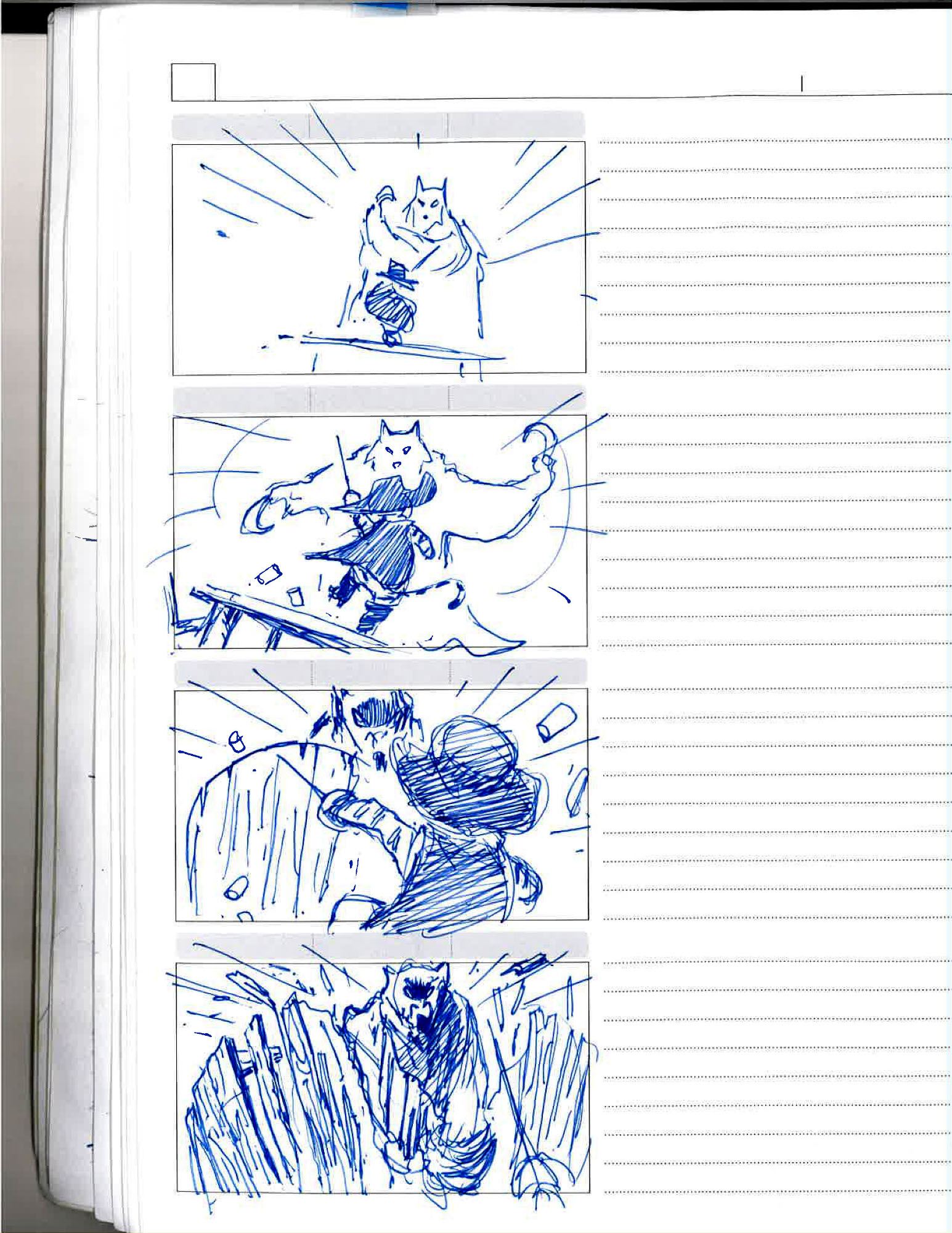
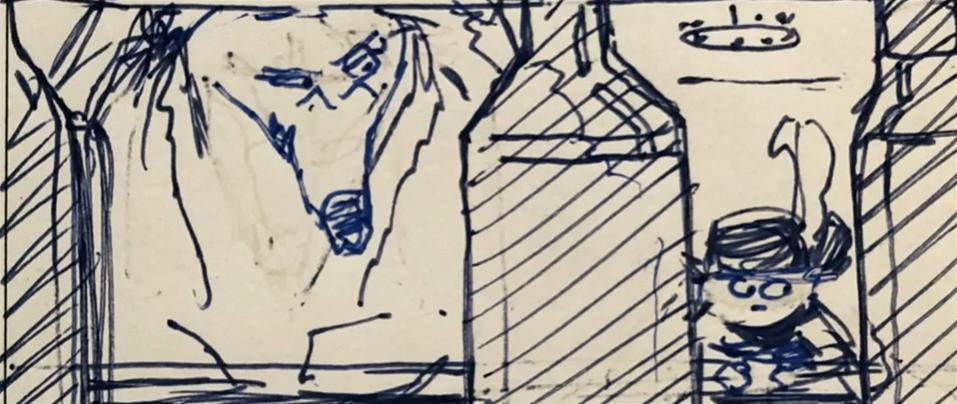
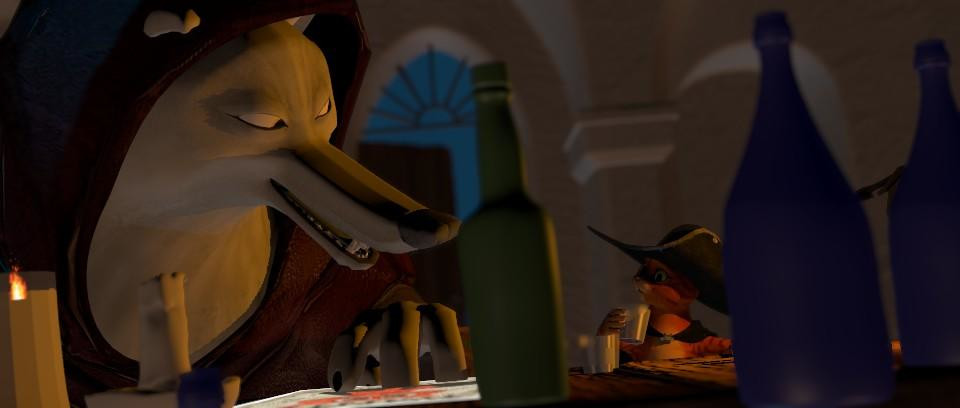
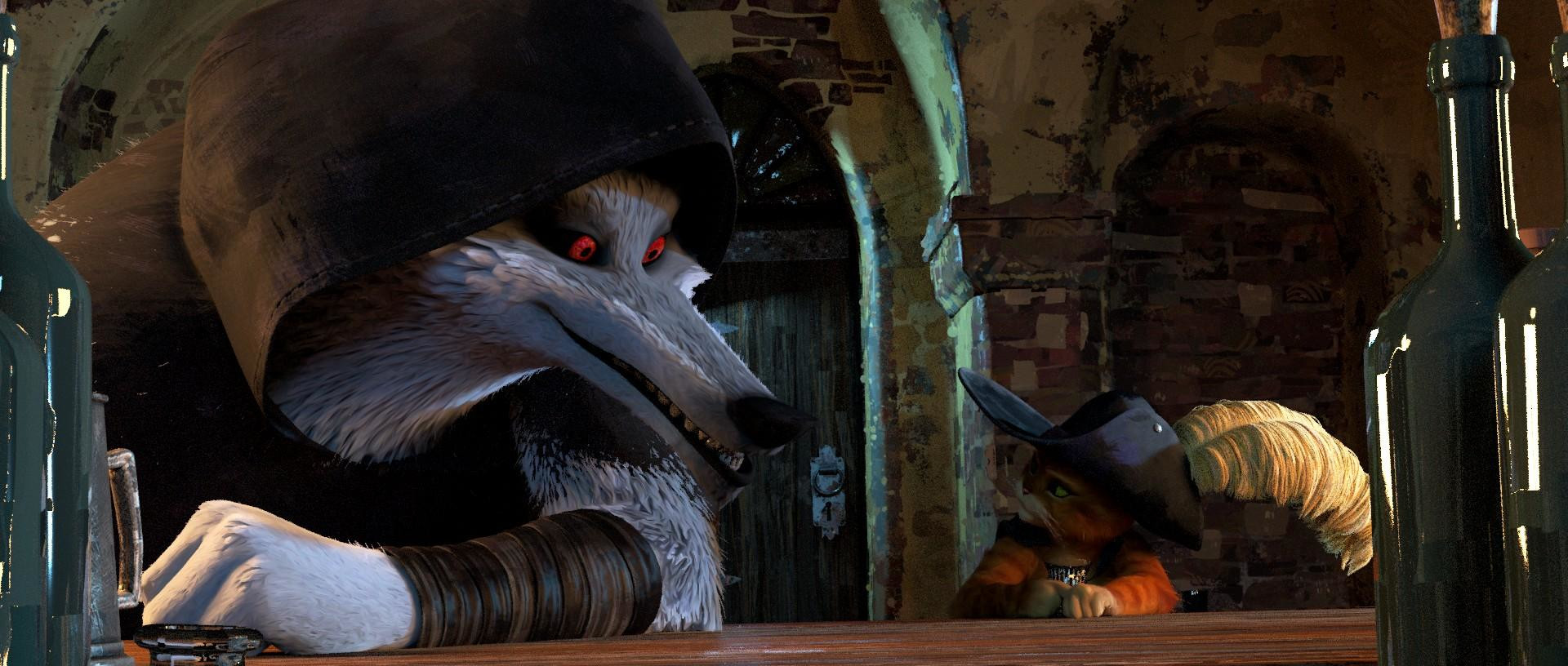
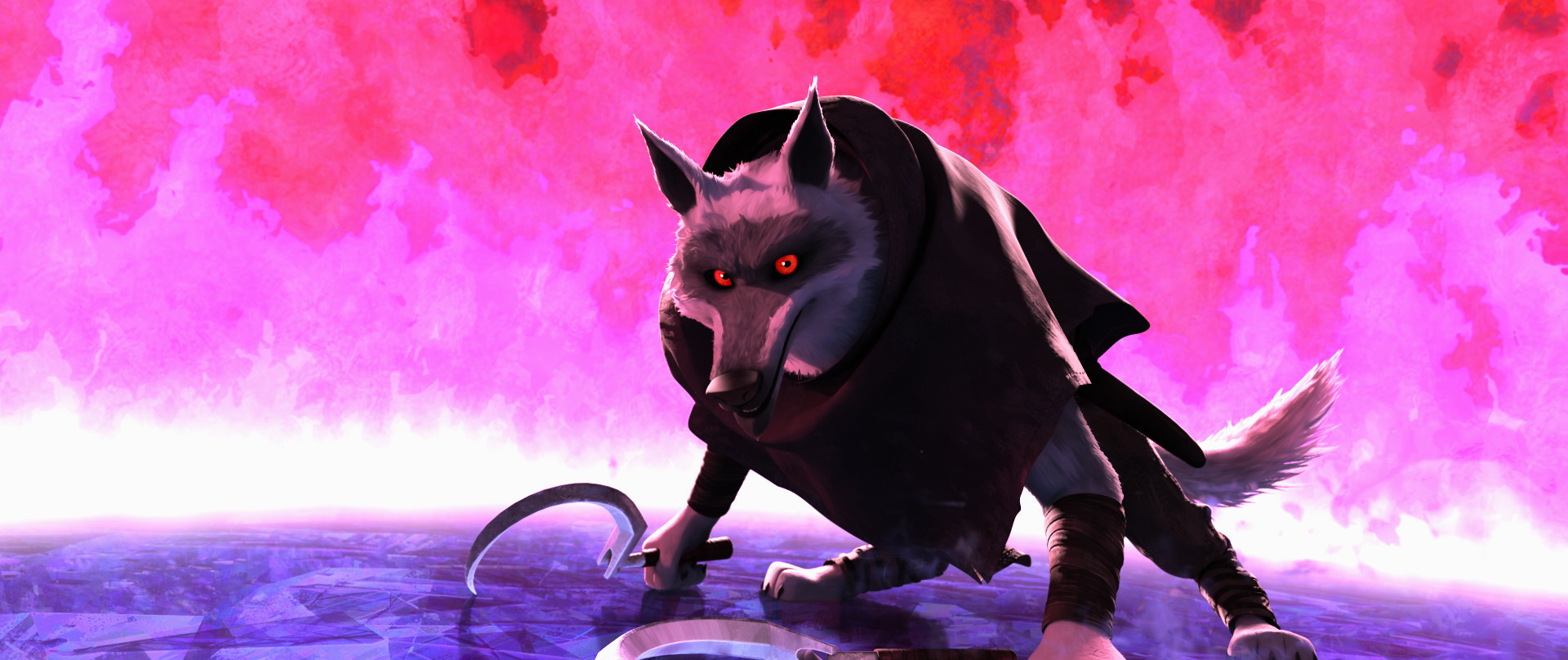
Turning Red
Rona Liu, production designer
Character: Mei
What were the visual references you had in mind when planning out Mei’s physical appearance and movement (especially in Panda form)?
Liu: Mei’s design is a celebration of every teenager going through the confusing time of puberty. For that reason, so much of her design was inspired by old photographs of ourselves. Our chubby cheeks, sparse and ungroomed eyebrows, and moles sprinkled across our faces. Panda Mei is the metaphor for all the scary, awkward, and cringy changes we go through during our teenage years. She’s large and bright red so she cannot hide from anyone, including herself. Her fur is clumpy and her whiskers are crinkled because she’s imperfect. Early in pre-production, we visited an alpaca farm and modeled Panda Mei’s fluffy, but clumpy and messy hair, after the adorable animals we saw.

For both Mei and Panda Mei, we wanted to honor our heritage by borrowing the round and graceful shape language present in so much of ancient Chinese art and Chinese folk art. Retro anime was also a source of inspiration because those were the movies and shows that shaped our childhood and our aesthetics. Mei and Mei Panda not only needed to look great, but they also needed to emote like world-class actors and hit a wide range of emotions.
What difficulties did you encounter in realizing your goals for the character?
Liu: To achieve the look and animation we wanted for our characters, we needed to push the boundaries of their expressions and poses beyond what is regularly possible. We adopted a new technology on Turning Red called Profile Movers. It’s an intuitive and intelligent rigging system that allowed us to push our characters’ facial expressions and body movements to new limits and break traditional cg confines. It allowed us to combine the richness and believability of cg animation with the charm and exaggeration typically associated with 2d animation.
What impact did Rosalie Chiang’s performance have on the Mei character?
Liu: In our very earliest version of this film, we found a local 12-year-old girl named Rosalie Chiang to record the temp voice for Mei. Over the next year, as we tried to look for other actors to replace her in the final film…nobody came close. Rosalie had become Mei. It was meant to be and there was no one who sounded more like Mei than Rosalie.
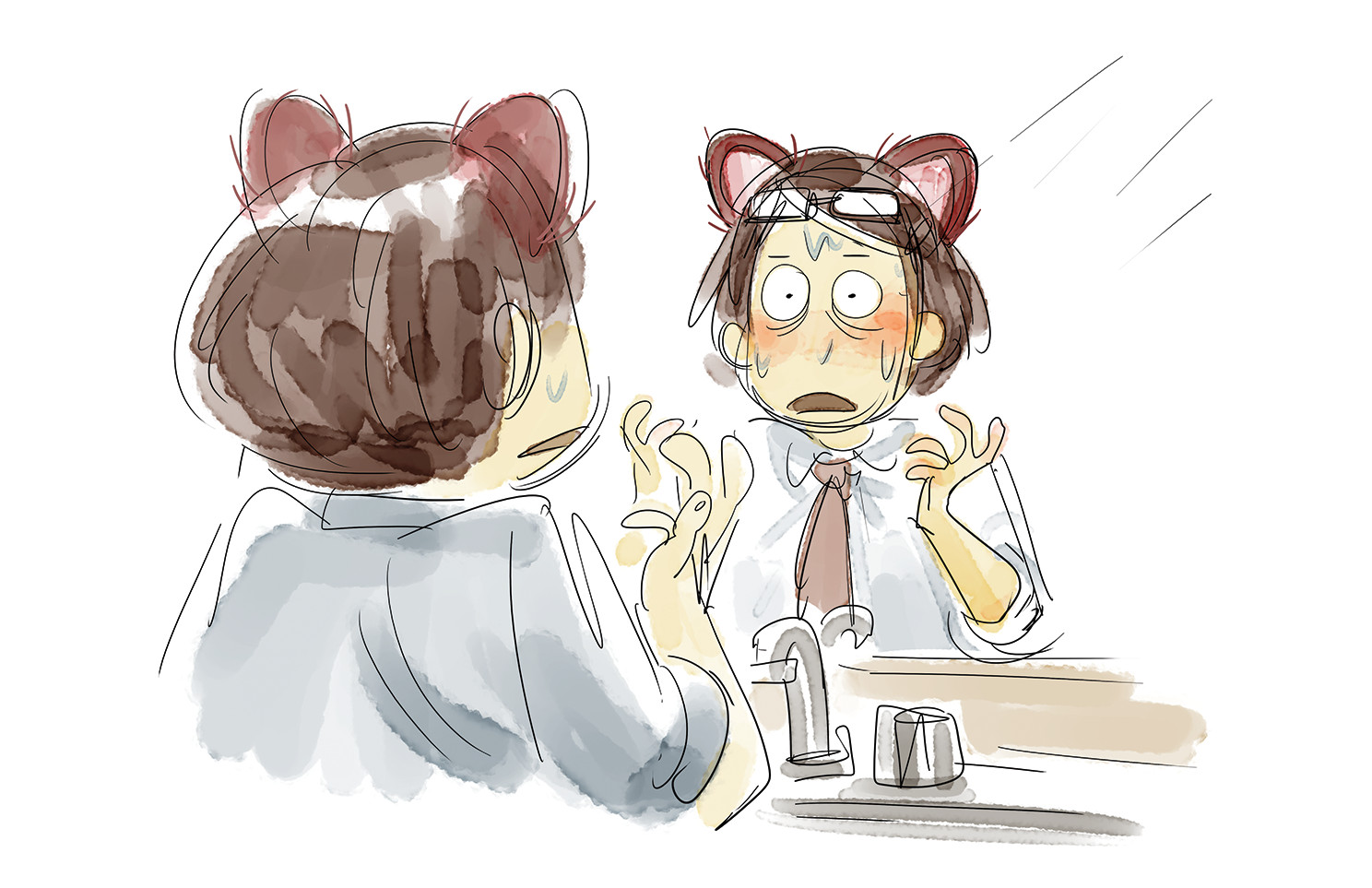
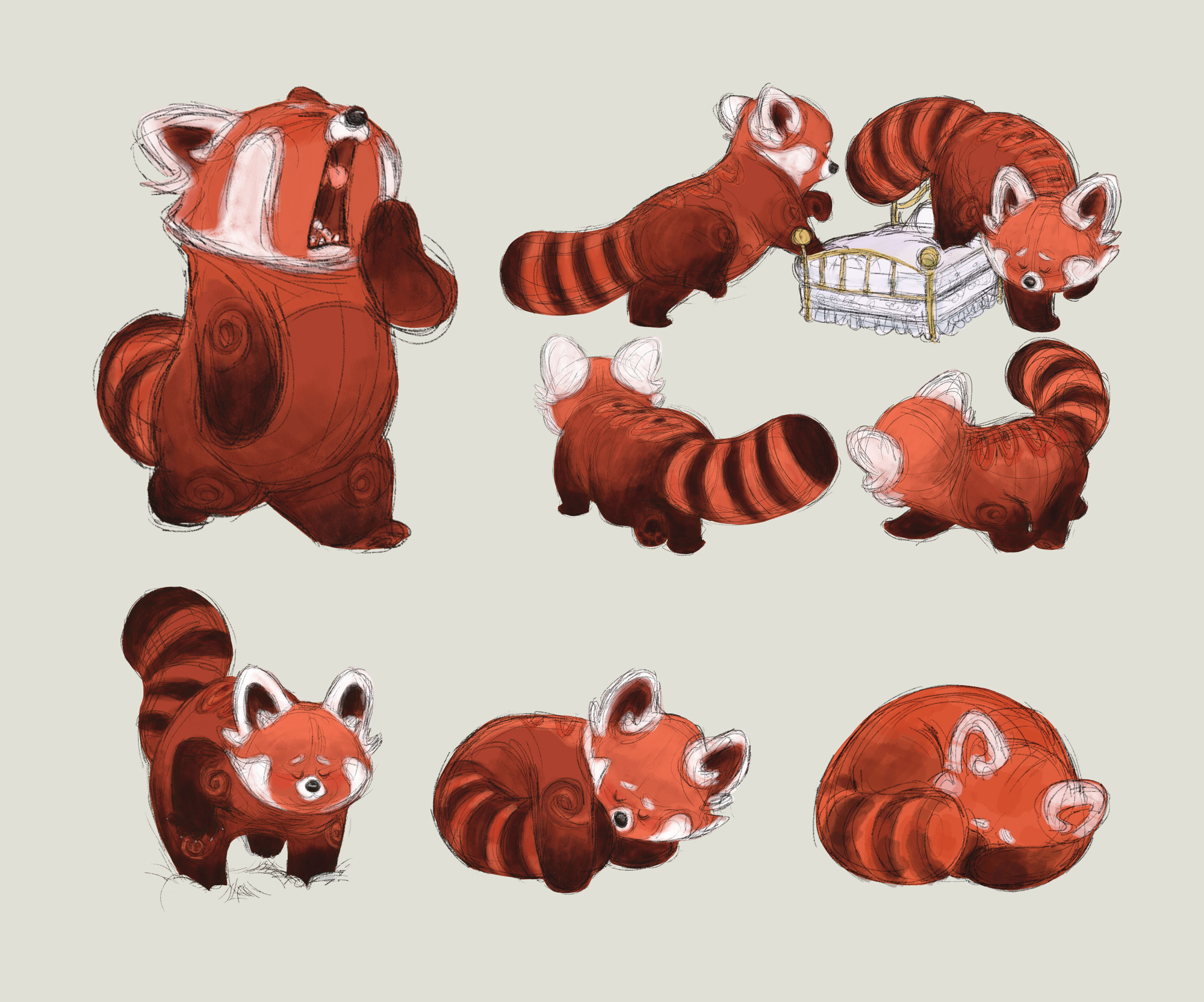

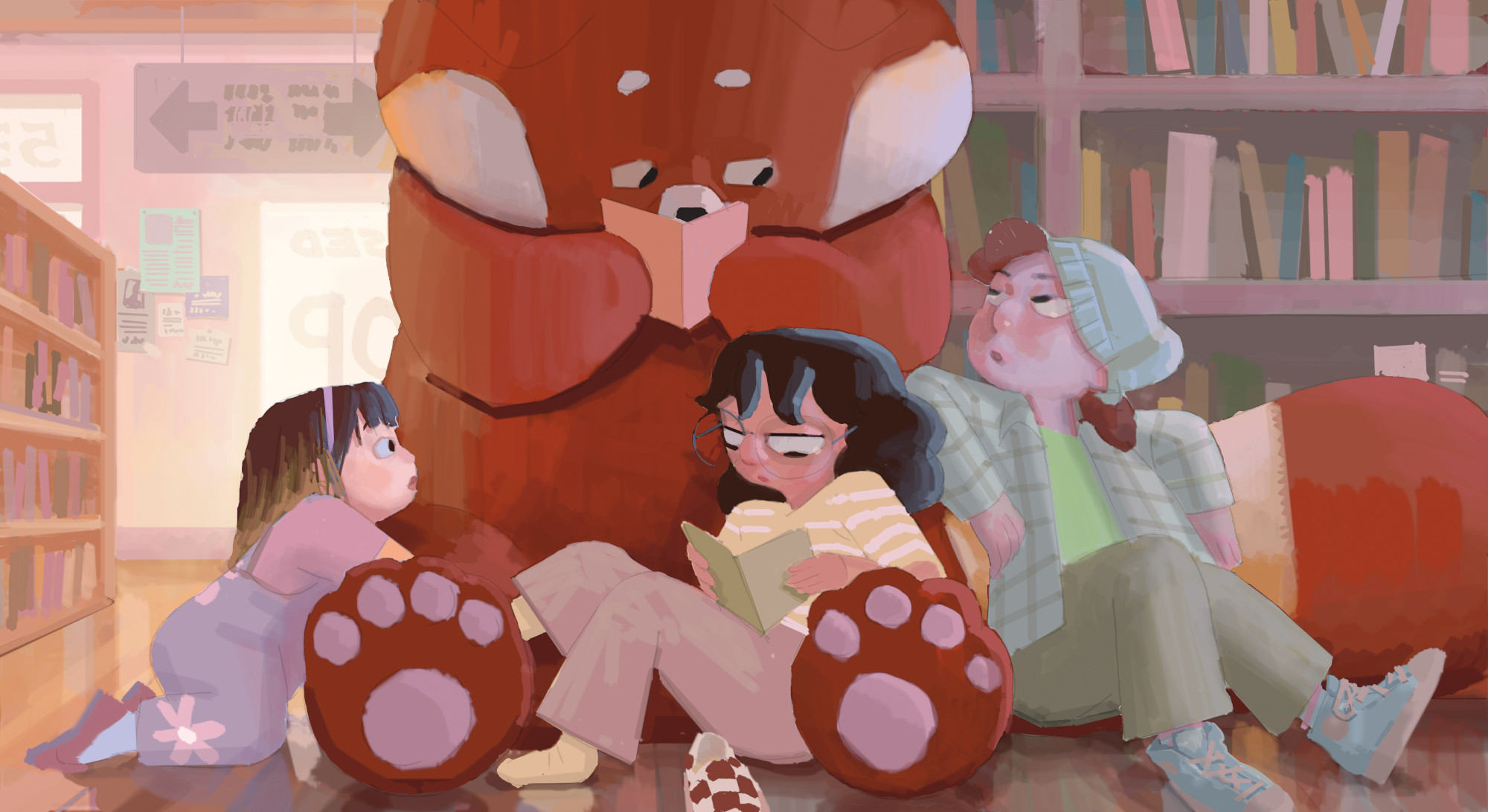
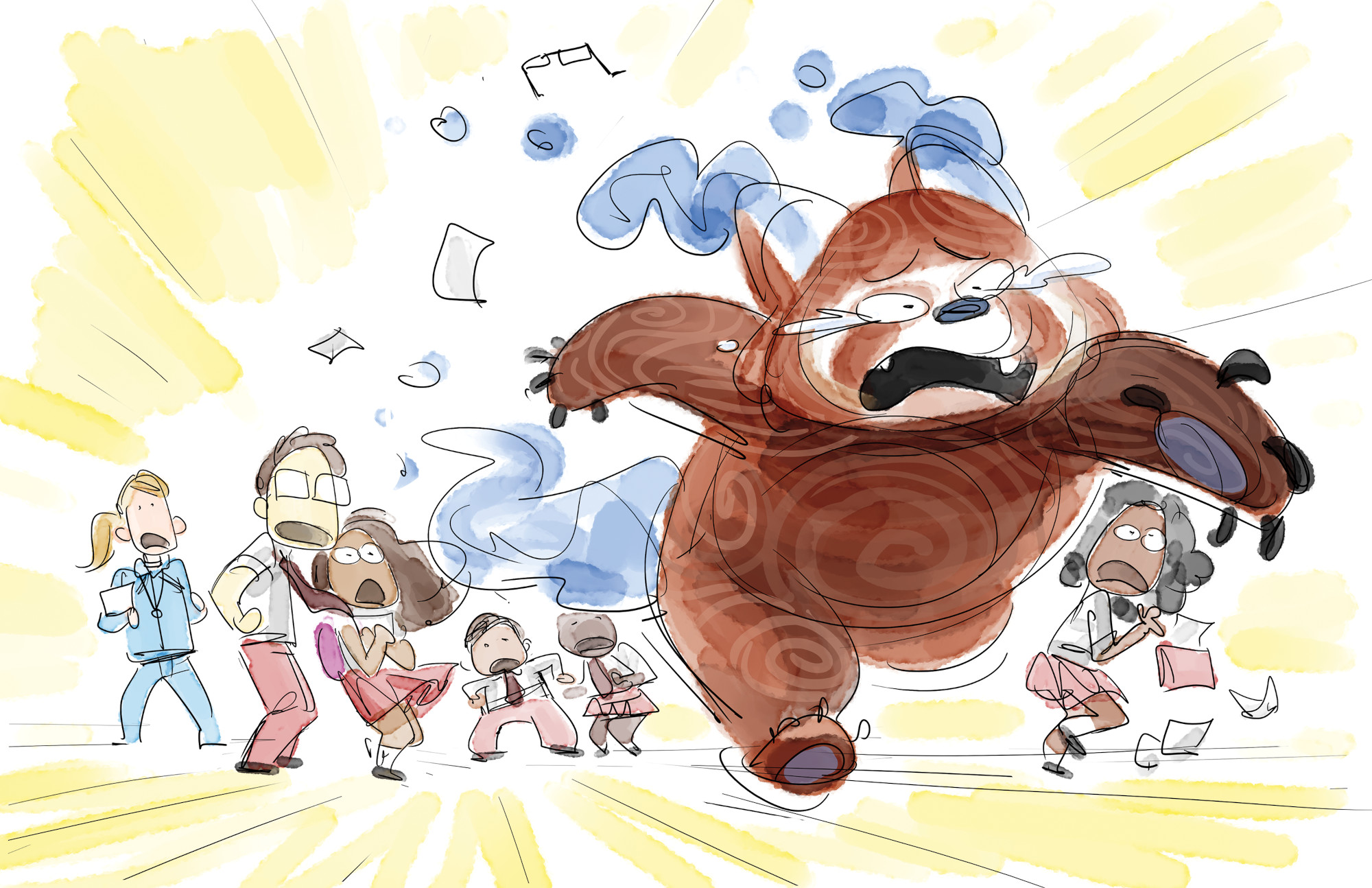
The Sea Beast
Chris Williams, director
Character: Captain Crow
What were the visual references you had in mind when planning out Captain Crow’s physical appearance and movement?
Williams: We knew that Captain Crow was a mythic figure, and we wanted his design to live up to the legend — he had to have a striking and formidable look. And we always saw him as extremely large, so we looked at weightlifters and wrestlers like Brock Lesnar.
Josh Beveridge, our head of character animation, found a reference to Tom Hardy that was very helpful. In his physicality, Hardy is able to convey a character that carries the weight of the world — and someone that has been in a fight or two.
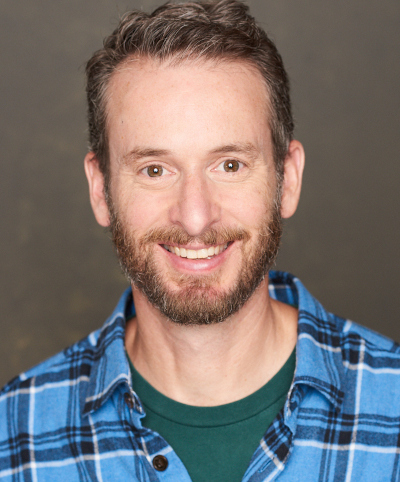
In watching the performances (and speaking with experts on sailing) we saw that a sea captain needs to have certain qualities — they have the lives of the crew in their hands and must present themselves as authoritative and capable. They cannot be questioned and must have an air of certainty. All of this needed to come through in the animation.
What difficulties did you encounter in realizing your goals for the character?
Williams: One of the challenges from an acting standpoint was our own desire for restraint. We would talk for hours about all the things that Crow was thinking and feeling, then ask the animators not to express all those things — instead we wanted to make more controlled choices. That way every choice is imbued with power and meaning. We also needed to show that this hulking tank of a man, that moved with such discipline, could also be a dynamic fighter. Here again, the Tom Hardy reference was very helpful.
What impact did Jared Harris’ performance have on the Crow character?
Williams: The casting of Jared Harris was critical. He was our first choice and was able to create a complex and sympathetic character, despite his flaws. One of Jared’s gifts is his ability to bring a sense of history to the character. You feel all the years and all the experiences that led up to the moment. He can be so restrained, and yet convey all a character’s layers and contradictions. You feel all the emotion the character is holding back under his more severe and formal exterior. We were so grateful to Jared for bringing the depth and richness of character necessary for a character like Captain Crow.
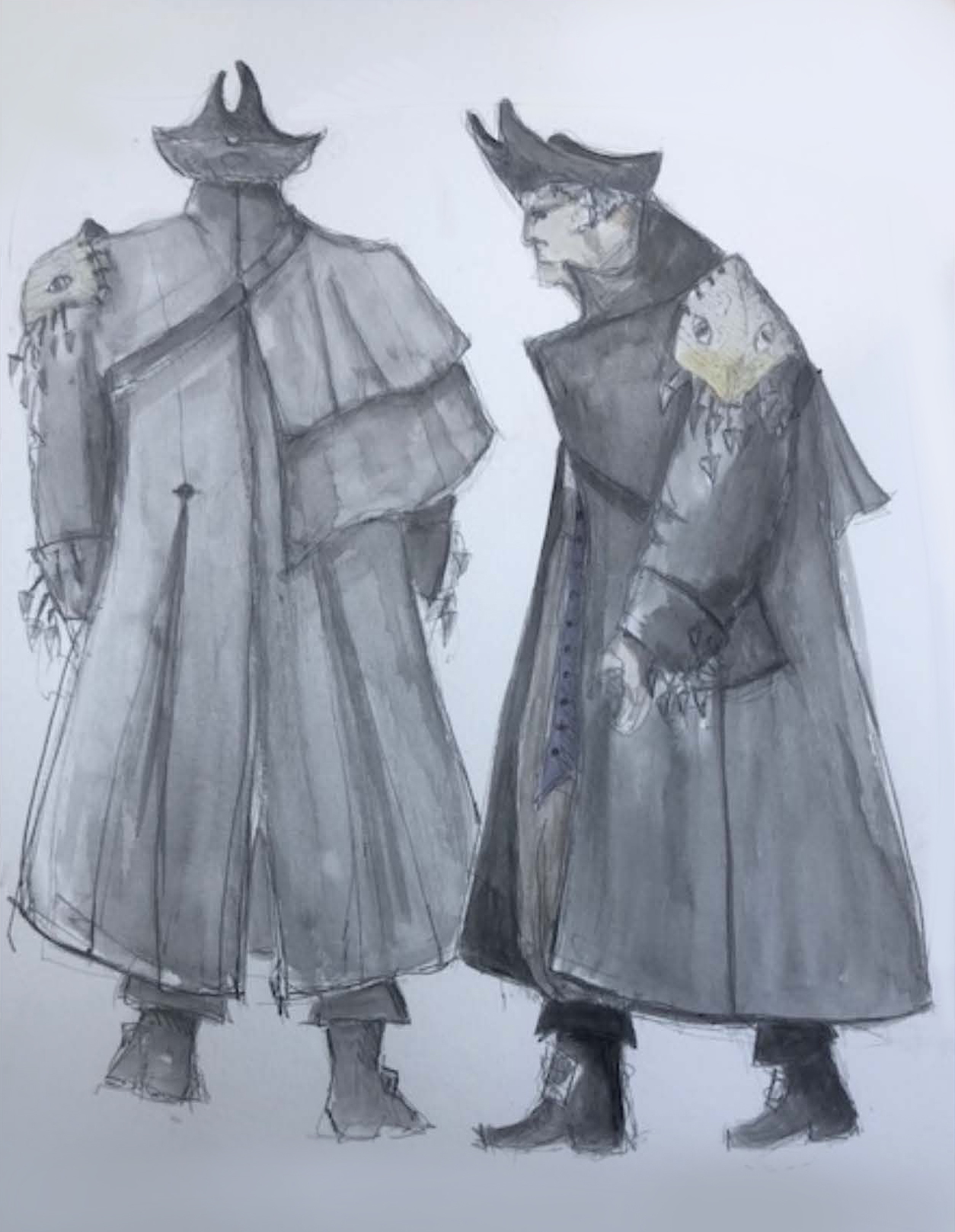
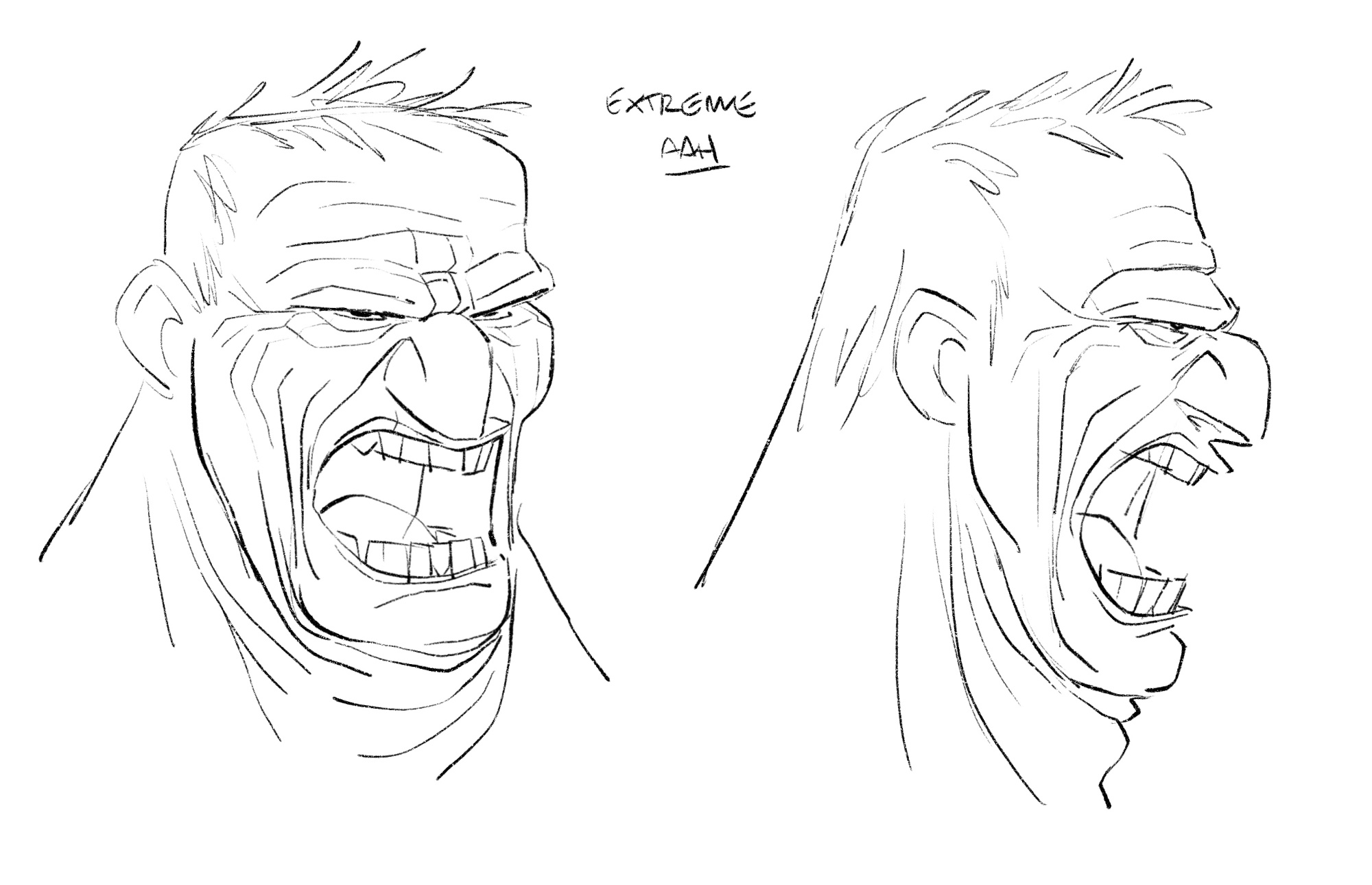
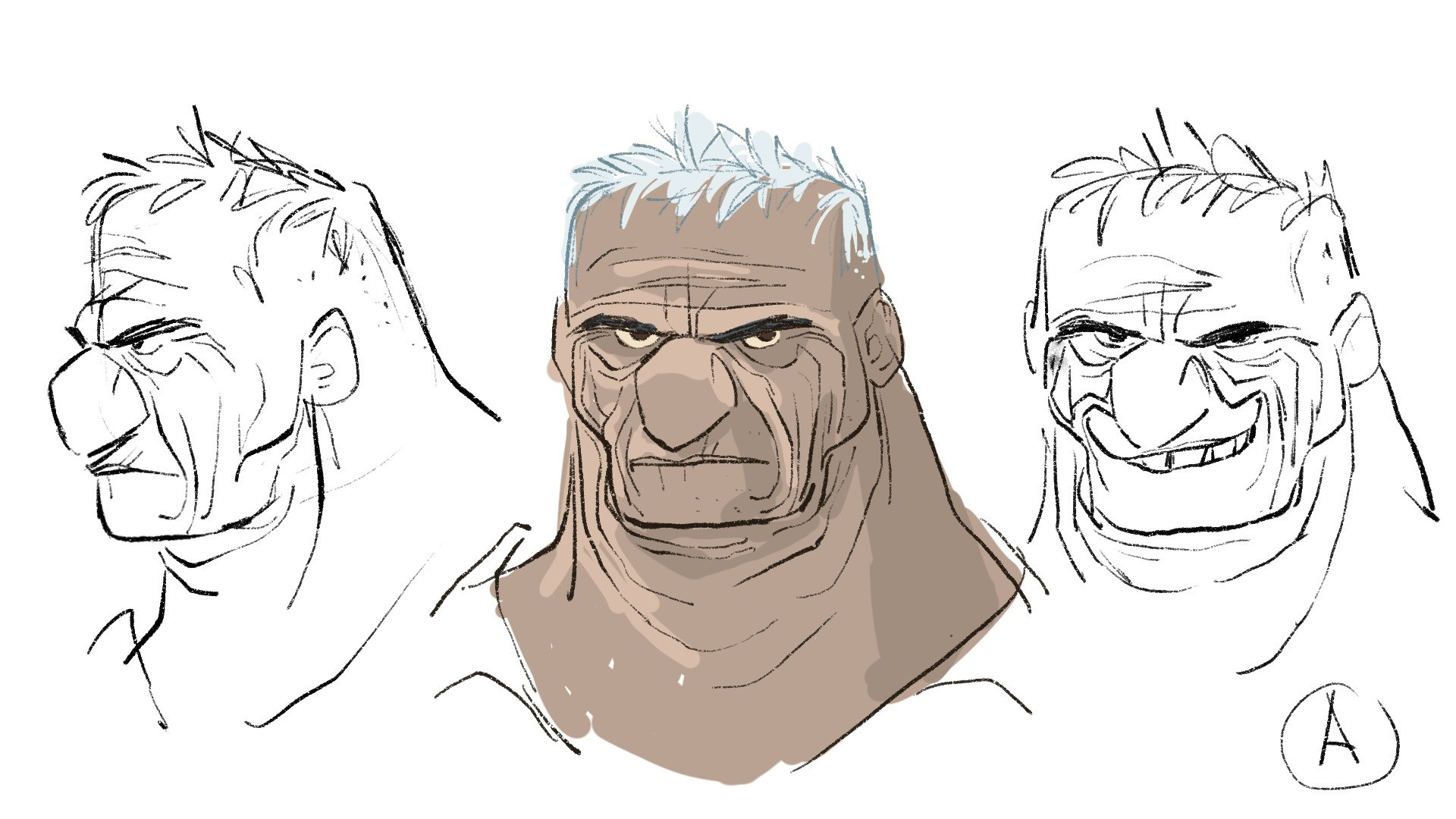
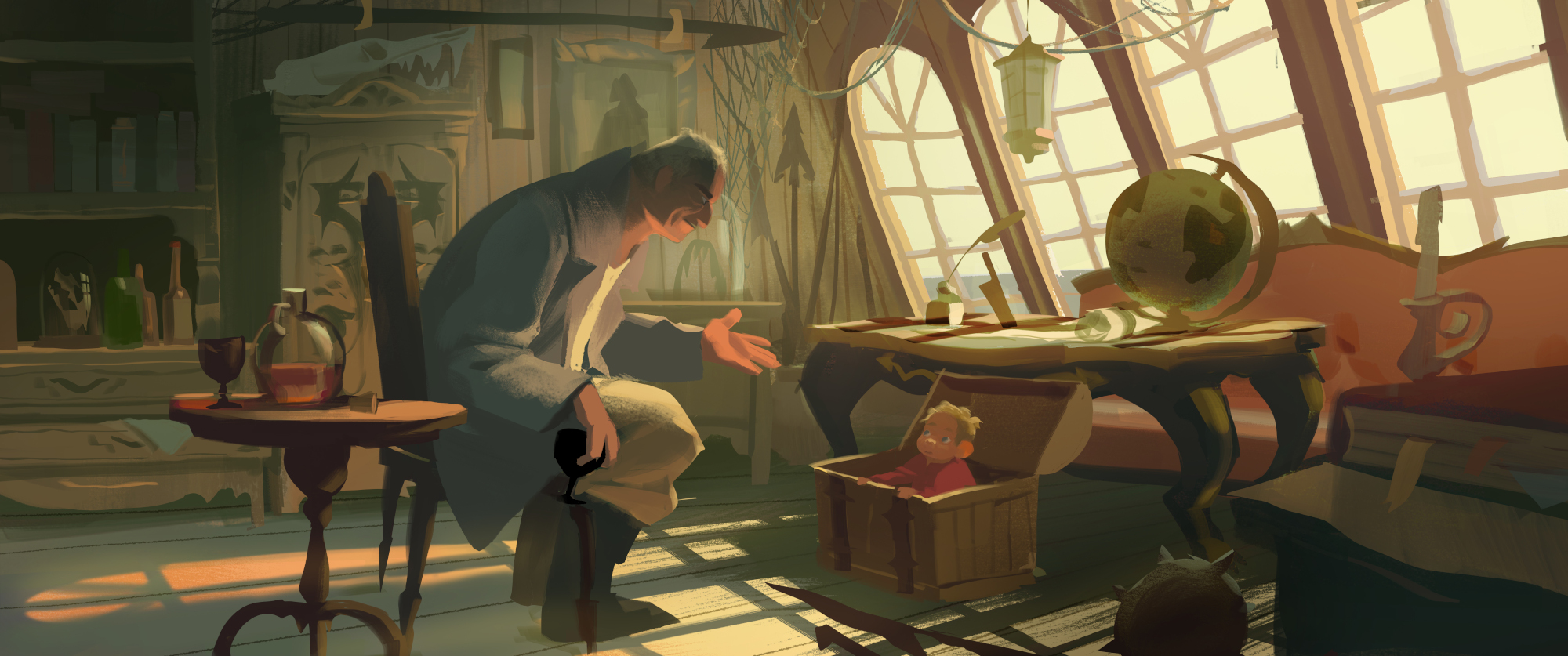
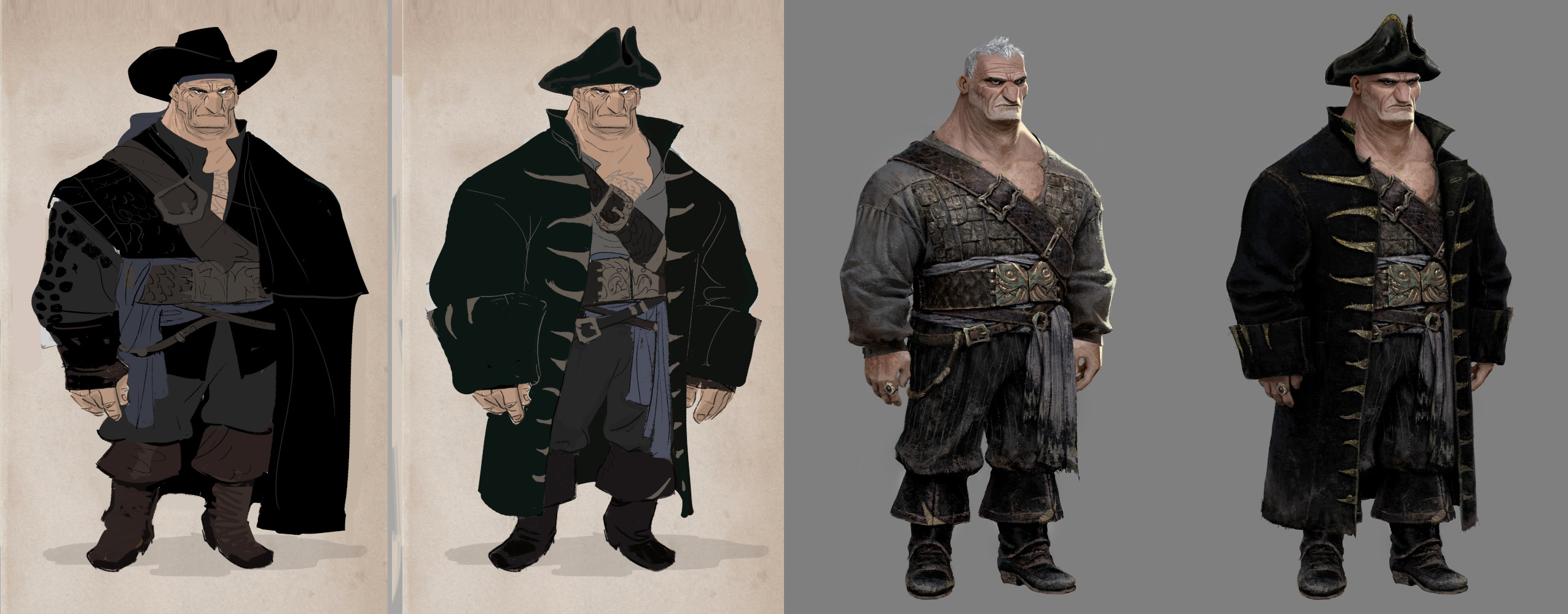
Marcel the Shell with Shoes On
Kirsten Lepore, animation director
Character: Connie
What were the visual references you had in mind when planning out Connie’s physical appearance and movement?
Lepore: Connie probably took the longest of any character for us to design. We started planning out what she might look like before storyboards. It was one of the first things that Dean [Fleischer Camp] and I talked about when we first started working on the film. At first, we thought she would be a shell or a mossy rock, so in looking for references we looked at barnacles, moss, and shells of different ages, but nothing that we were drawing out on paper felt quite right. Later, I took a holiday break and visited the Natural History Museum in New York. I was taking like pictures of every shell that I saw that was in the museum and like, could this work? Eventually, during development, Isaiah Saxon did a cute little sketch of Connie. She was a blobby sort of shape with little ridges and barnacles and some moss growing on her, a gardening hat, and welly shoes.
In the end, we stuck with our original dimensions and had a sculptor come in and create a version of the shell because we couldn’t find one that was exactly what we were looking for. We needed her to play well against Marcel, and one thing we realized is that if their eyes were on the same side, it was gonna make some of their shots talking to one another awkward.
Throughout the whole storyboard process, Dean and I didn’t know what Connie was going to look like yet, so we always drew her as a sort of triangular blob that sort of looked like Grimace from the McDonald’s characters. It was stressful because, with such small characters, you really need to know their dimensions to plan out how they move. We were nervous that if we storyboarded the whole thing one way and the character dimensions changed, it could the scenes completely.

What difficulties did you encounter in realizing your goals for the character?
Lepore: We used sticky wax to attach shoes to the bottom of Marcel, and that worked really well for him. But for Connie, with a design where the bottom of her body was more round, that wasn’t going to work. Once we put the shoes on they didn’t sit as nicely as they did with Marcel, who could stand on his feet by himself. Getting Connie to stand upright took a lot of R&D back and forth between the puppet team and the animators on stage to find the right mix of hollowing out the model, and creating a groove underneath her body so the shoes would stay on. It’s a testament to the beauty of nature, that things just king of work. It’s very hard to just construct something from scratch that’s man-made and has the same kind of perfect simplicity and symmetry that it just works.
What impact did Isabella Rossellini’s performance have on the Connie character?
Lepore: When I found out Isabella had done the voice recordings for Connie I was like, “This is the best thing I’ve ever heard. This is absolutely perfect.” Since we had the voice first and were designing the character and her movements, we really got to tailor Connie’s movements to fit with Isabella’s voice. It was nice having that in our minds as we were designing the scenes. In some animation productions, you can really see the actor in the animated character. And I think that’s usually a little bit on purpose. Now, Connie doesn’t look anything like Isabella, but her mannerisms were really informed by Isabella. I don’t think the whole plotline of Connie farming and being good in the soil was ever part of the original story written for her. But when Isabella came on, they literally did voice recording at Isabella’s farm. Those types of things helped to inform what the actual character ended up being in the film.
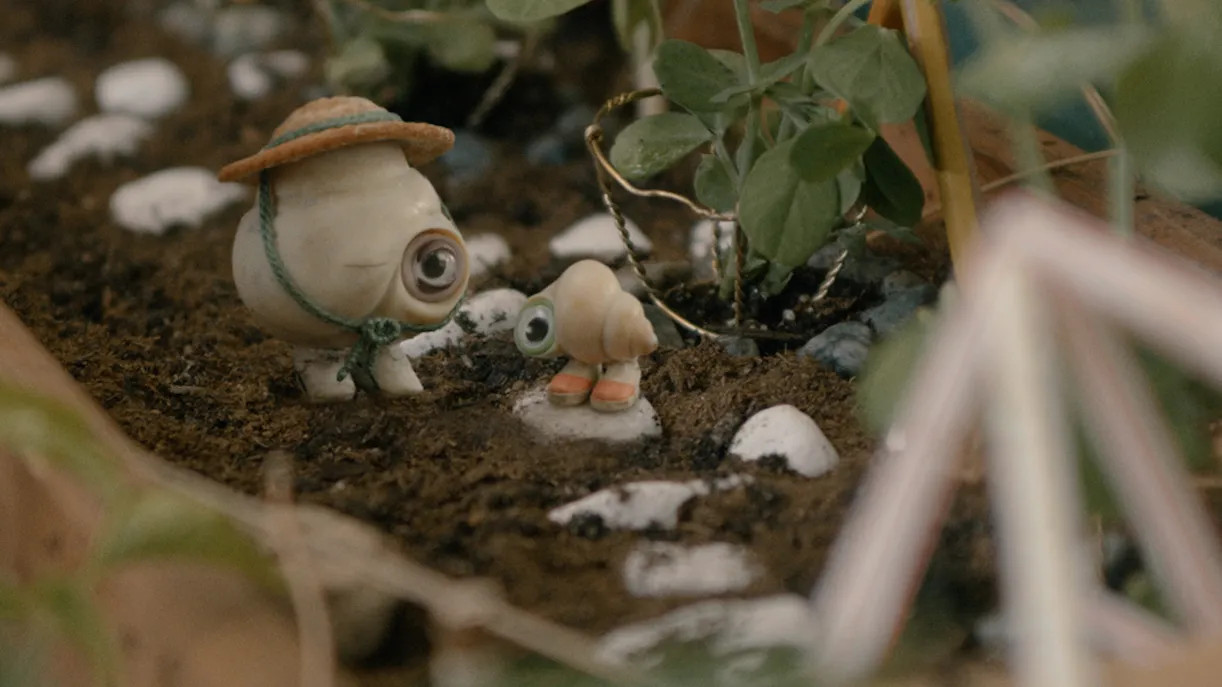
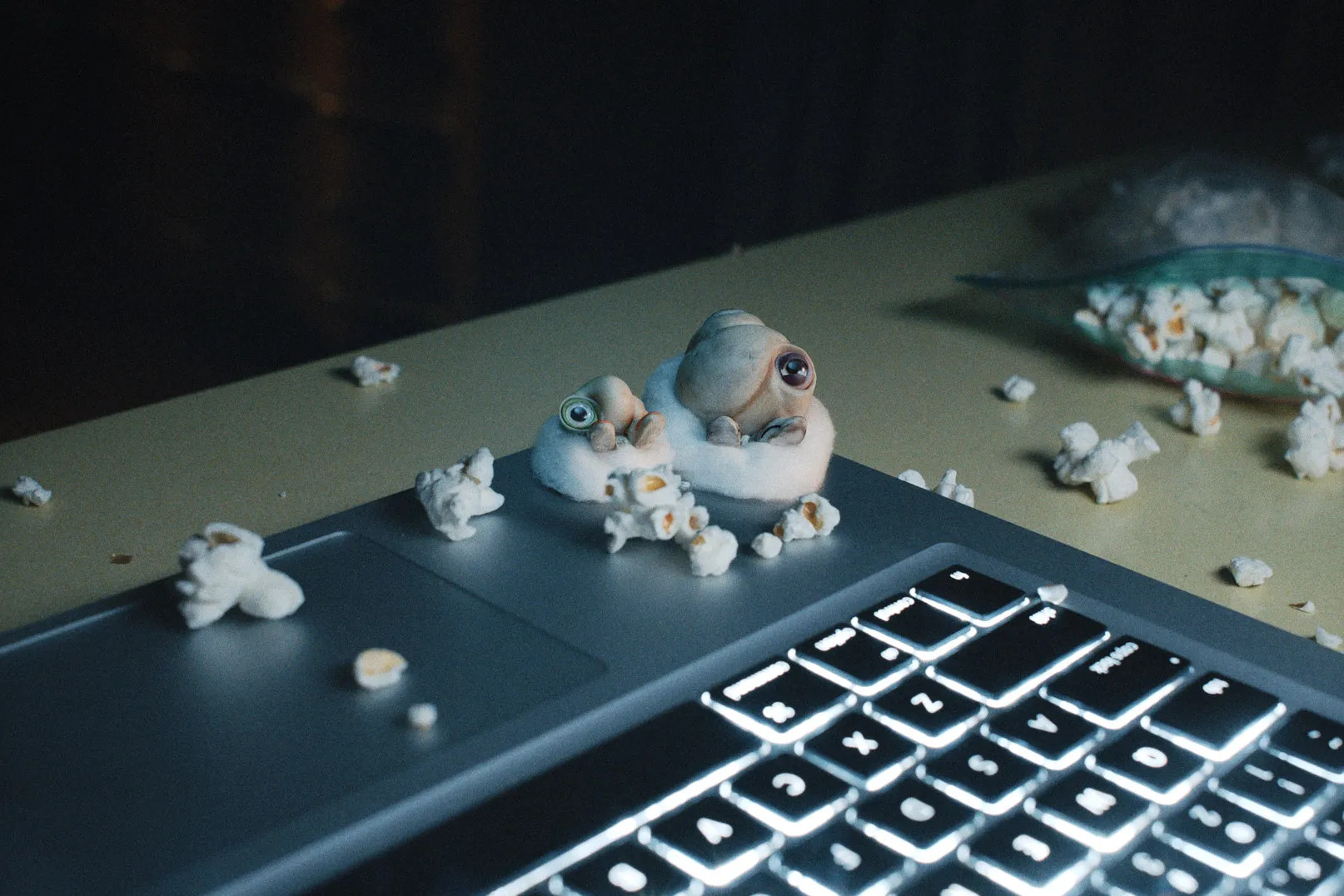
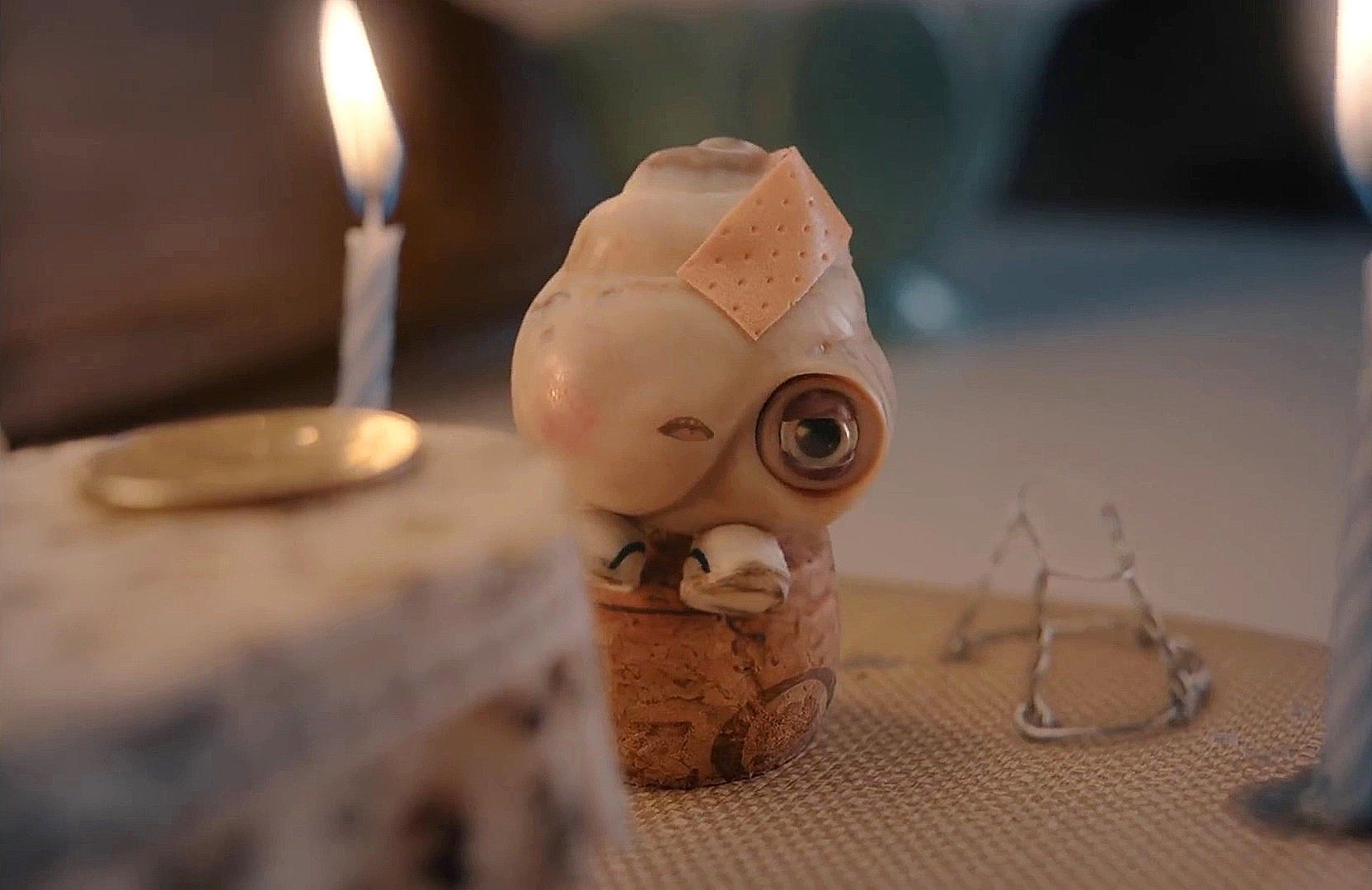
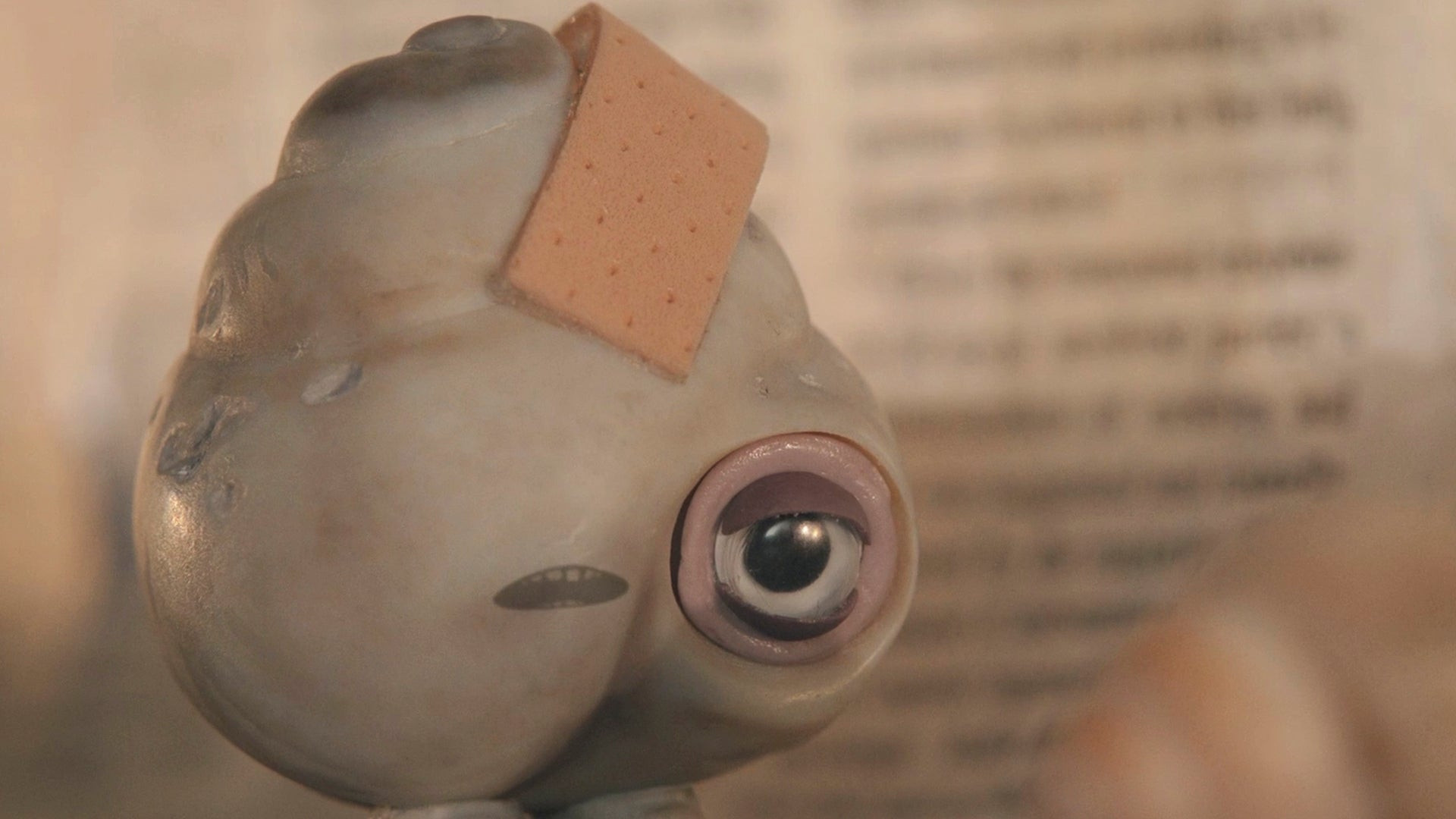

.png)
